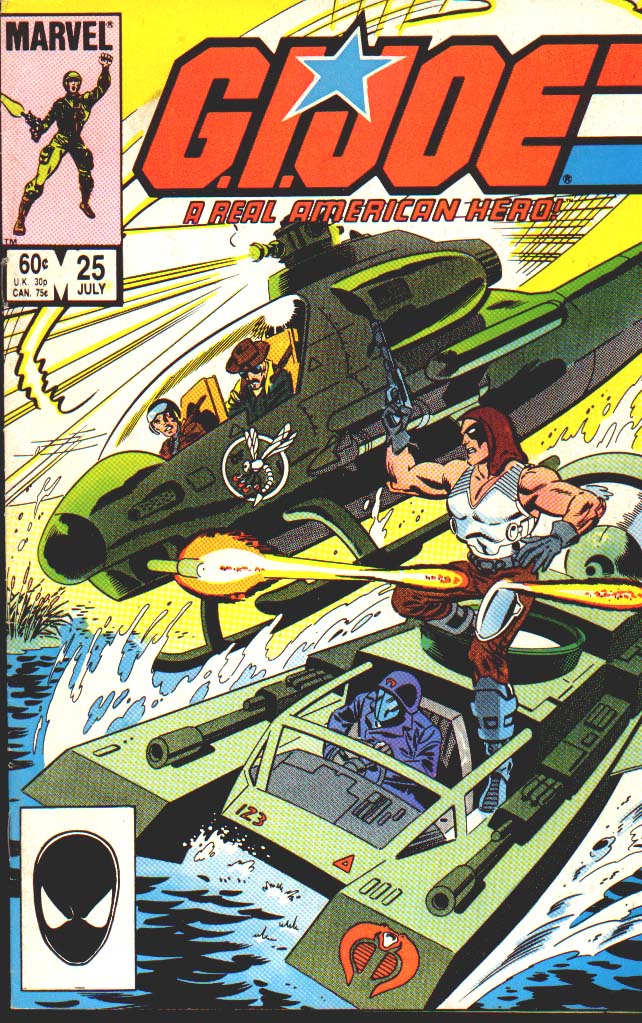
Zartan's disco theme is glorious. #GIJoe
I’ll always view Springer as a classic JOE artist, because he penciled some of my earliest issues. I read those as digest reprints, however, so
...seeing the art at the intended size always feels odd. Springer’s art benefits from being reduced, tightening every line up. Zartan signals a change in JOE’s reality. Hasbro thought color-changing plastic was cool, so Zartan’s skin was designed to turn blue in sunlight.
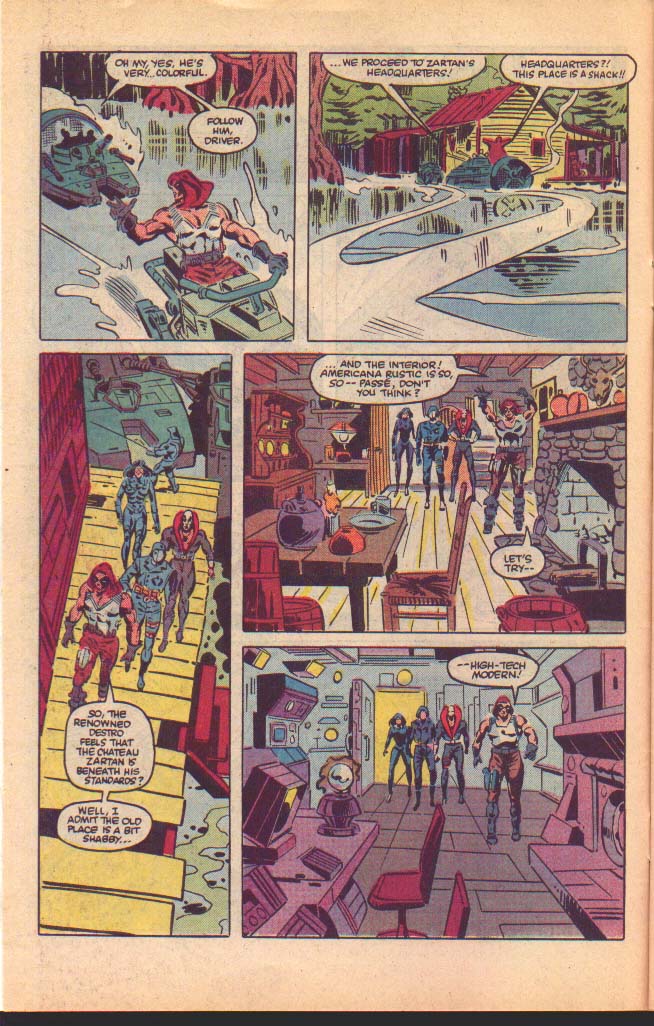
In addition, his “master of disguise” gimmick involved sci-fi holographic tech. Hama disliked moving JOE away from reality, but wasn’t in a position to do much about it. He also wasn’t a fan of the name (one of the few figures he didn’t christen.) It’s an anagram of Tarzan, for reasons I’ve never understood. Regardless, Hama took a liking to Zartan, fleshing him out over the years. Eventually, he’ll reside in a moral gray zone. Hama recycles the bicycle joke for the first time. Also, debuts of a few Joes he doesn’t care too much about. #LarryHama #GIJoe
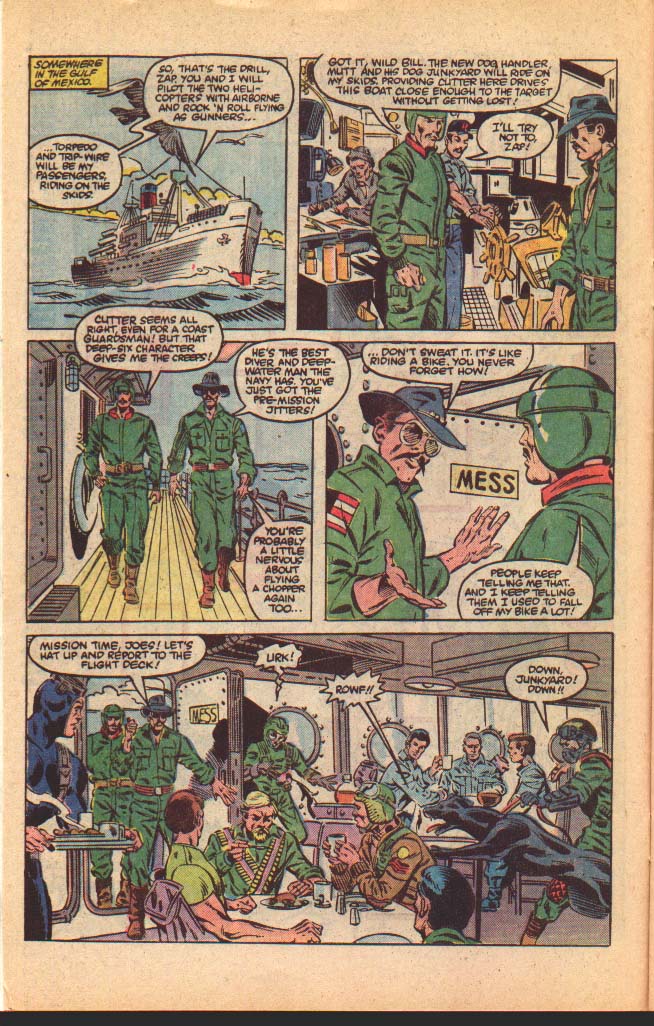
New Joes include Tripwire (klutz), Mutt (grouch), and Deep-Six (weirdly antisocial). All traits ignored in the cartoon, which didn’t treat dossiers as gospel. Several Joes we would now say are “on the spectrum.”
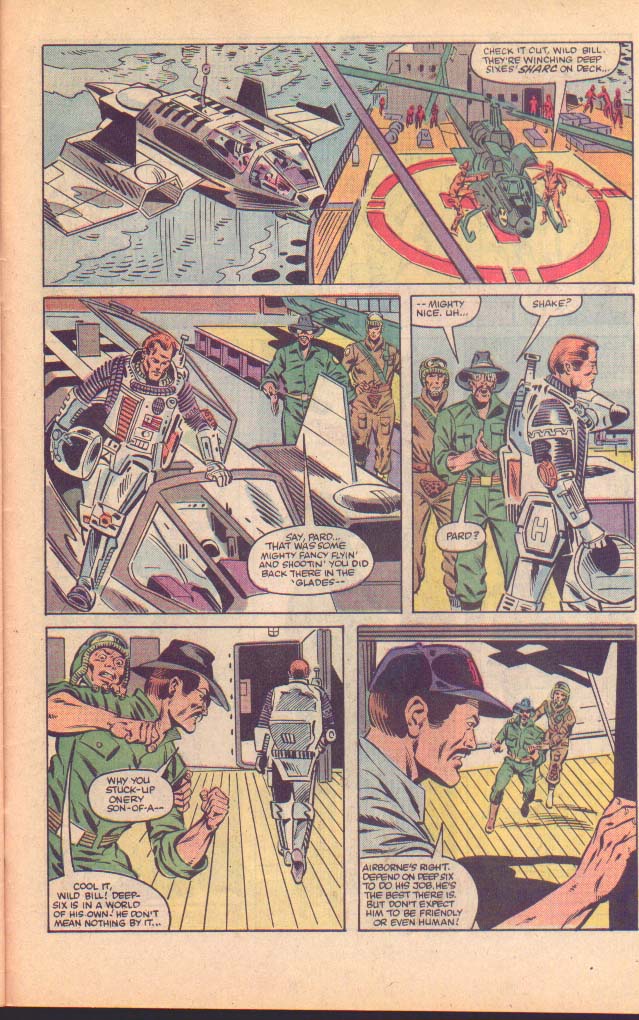
Zartan meets Firefly. Current continuity has both Zartan and Firefly present for something called the “Sword Shrine incident.”
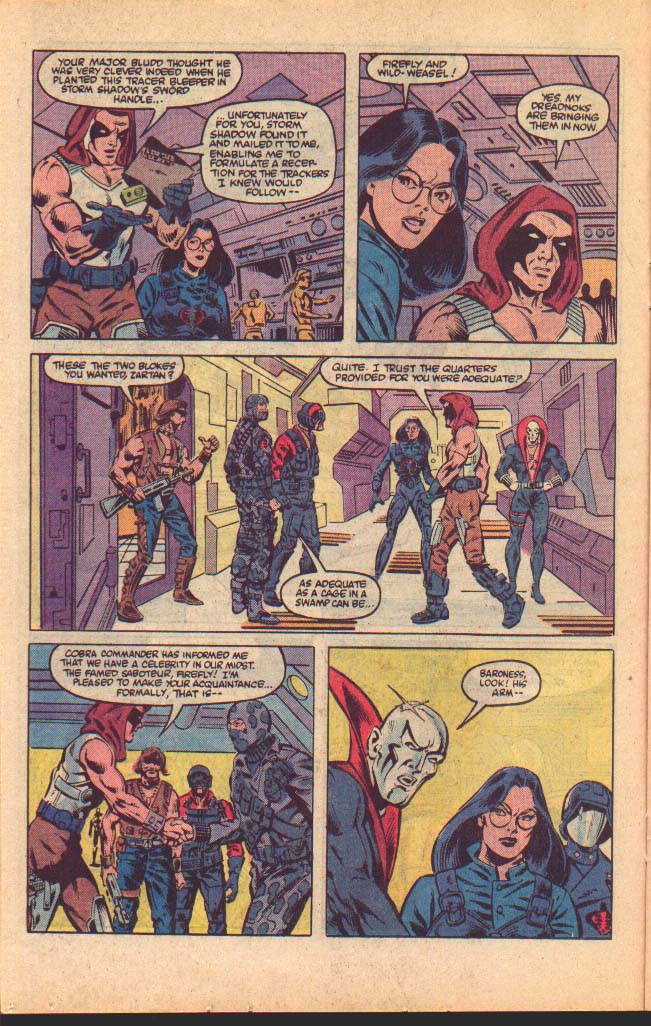
Both are retconned ninja(ish) characters with ties to the Arashikage. Not sure if there are any blatant contradictions here, but it’d be nice for this scene to be revisited today.
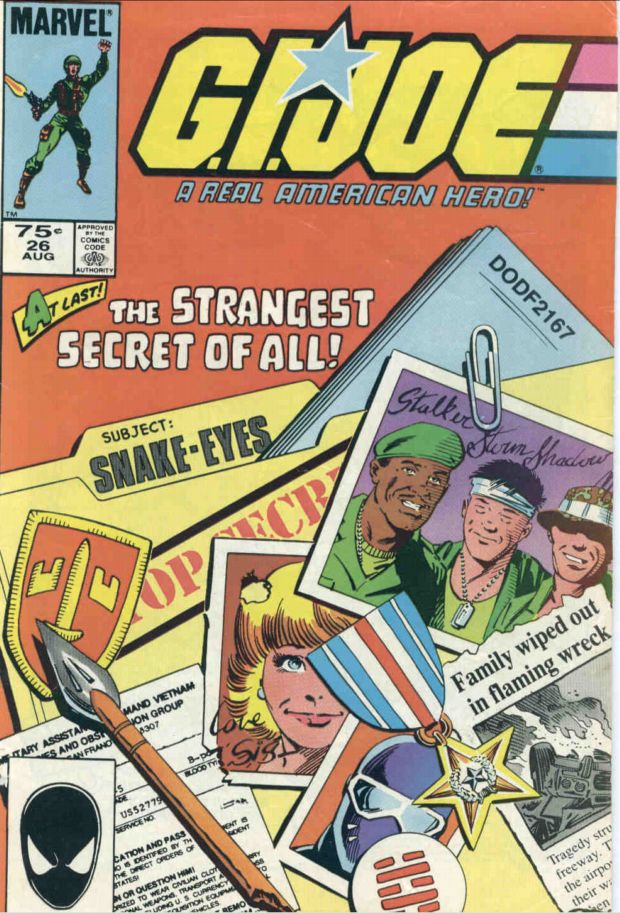
Steve Leialoha also returns to provide finishes. And, it’s the origin of Snake-Eyes! Often cited by Hama as his favorite story.
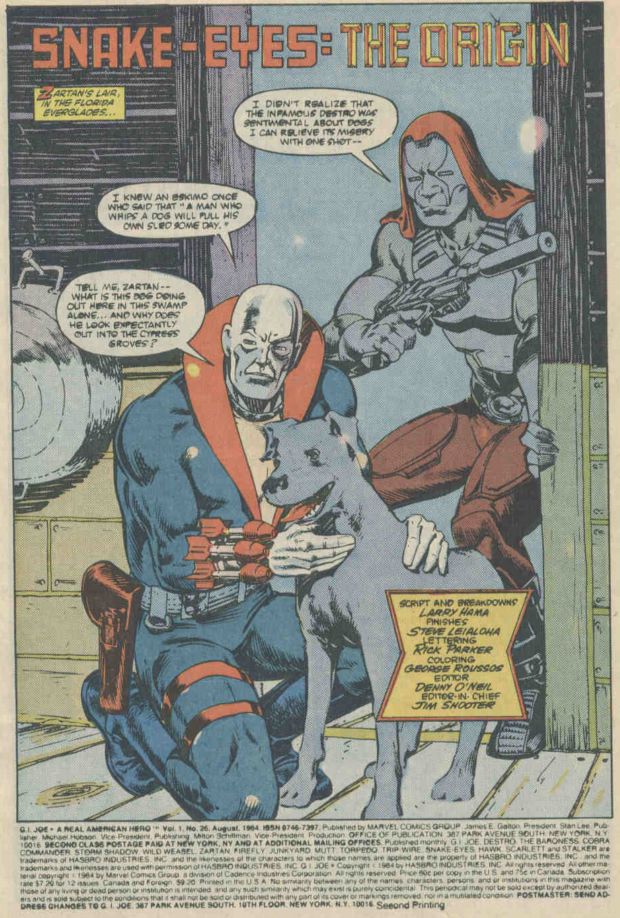
Can you believe Hama was the vice president of a gun club when he wrote these comics?
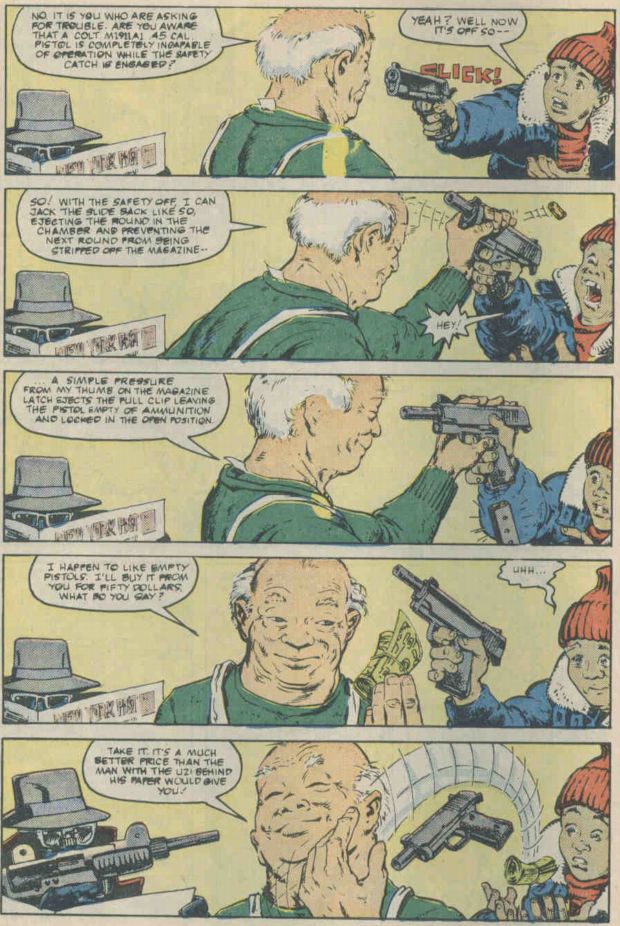
Christopher Priest used this scene in his writing workshop for years.
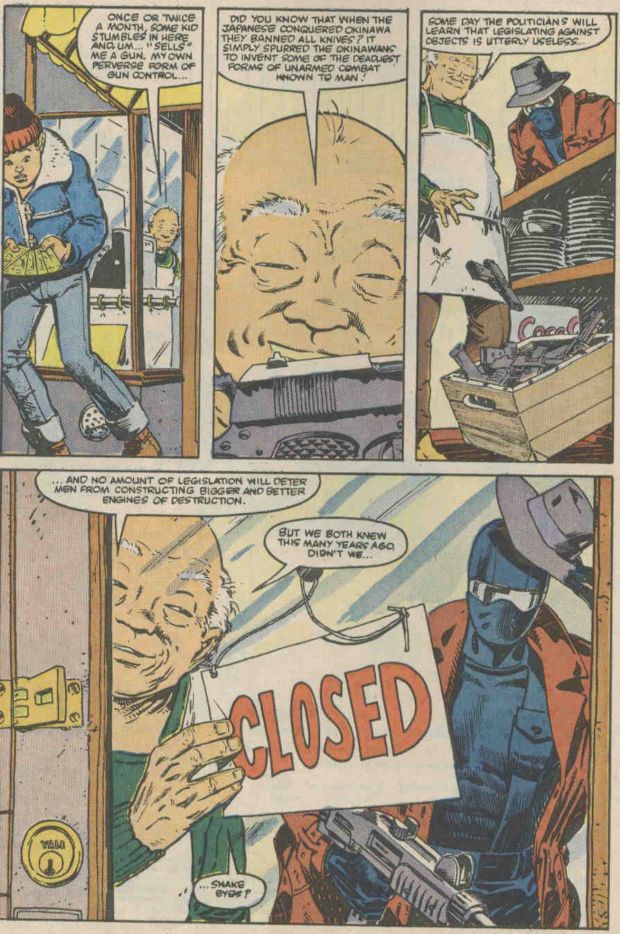
The story of Storm Shadow, Stalker, and Snake-Eyes serving in Nam is presented for the first time. Soon to be repeated numerous times in the comics. And immortalized in rap.
The tradition of never seeing Snake-Eyes’ face in full, even in flashbacks, begins here. He never speaks, either, although it’s implied he talks off-panel. Much of JOE was providing pure entertainment to kids, but its relationship to Vietnam is profound.
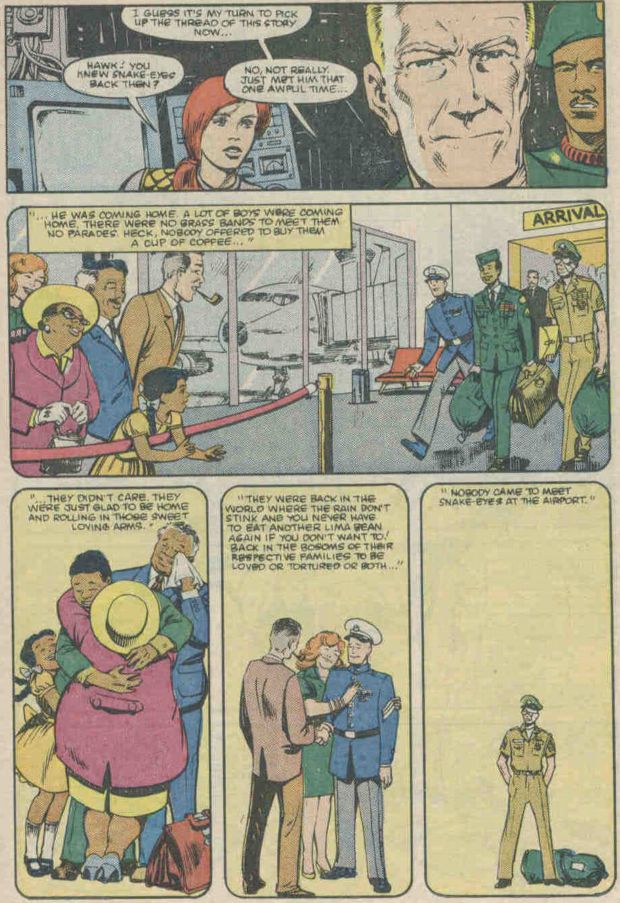
Allowing kids to see soldiers as heroes again wasn’t an easy sell in the early RAH days. And when Hama writes about Nam, there’s an honesty and sadness there.
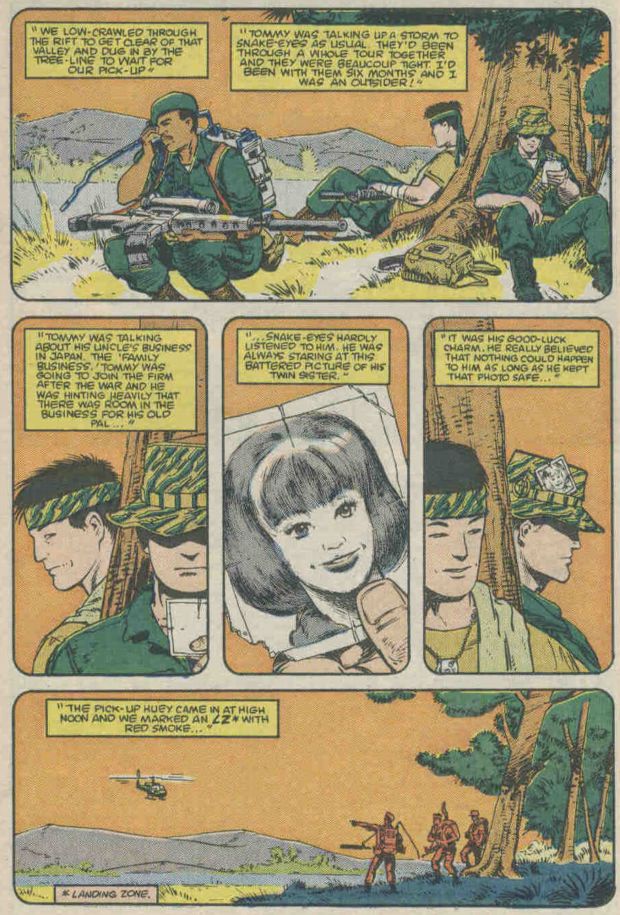
In many ways this is the definitive JOE story. An amalgamation of Hama’s personal interests/backstory told through a toy soldier narrative. #GIJoe #LarryHama
G. I. JOE #27 (September 1983) Featuring scenes revisited two hundred and twenty-three issues later! #GIJoe #LarryHama #SnakeEyes #StormShadow
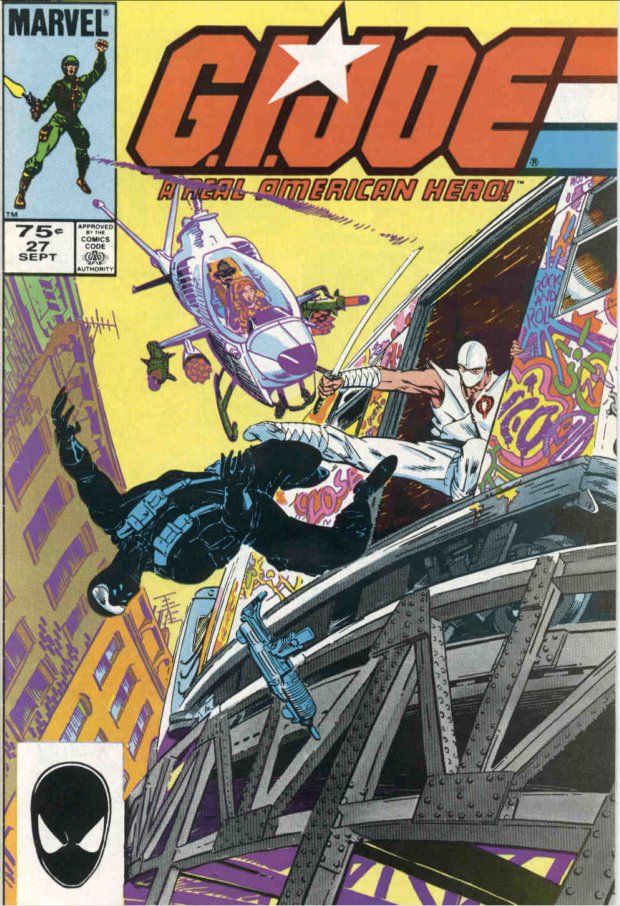
The first indication Cobra Commander really doesn’t like dogs.
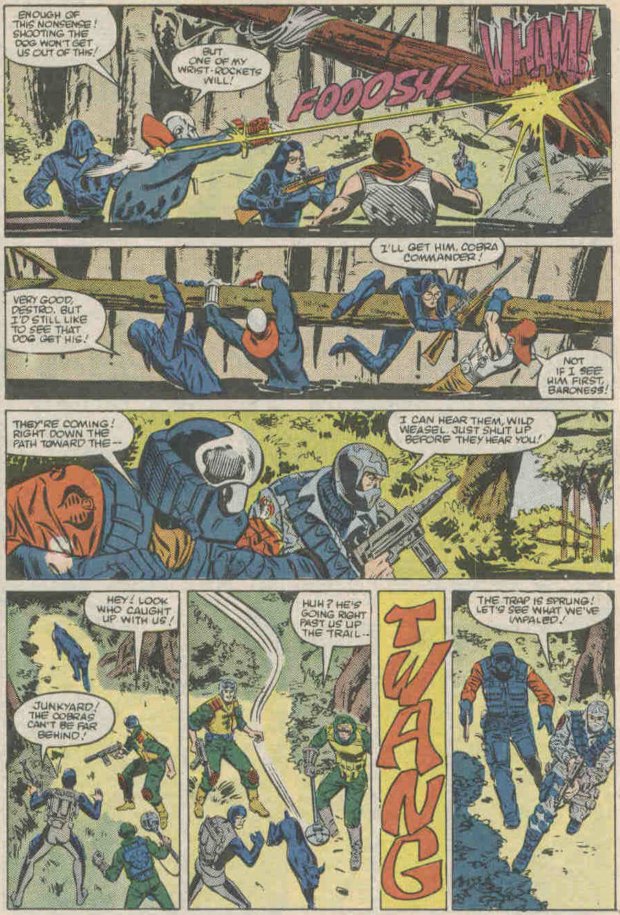
Scarlett reveals Snake-Eyes permanently scarred his face and voice saving her on an early mission. She wonders if he blames her for the injury, but views him as too decent to ever say so.
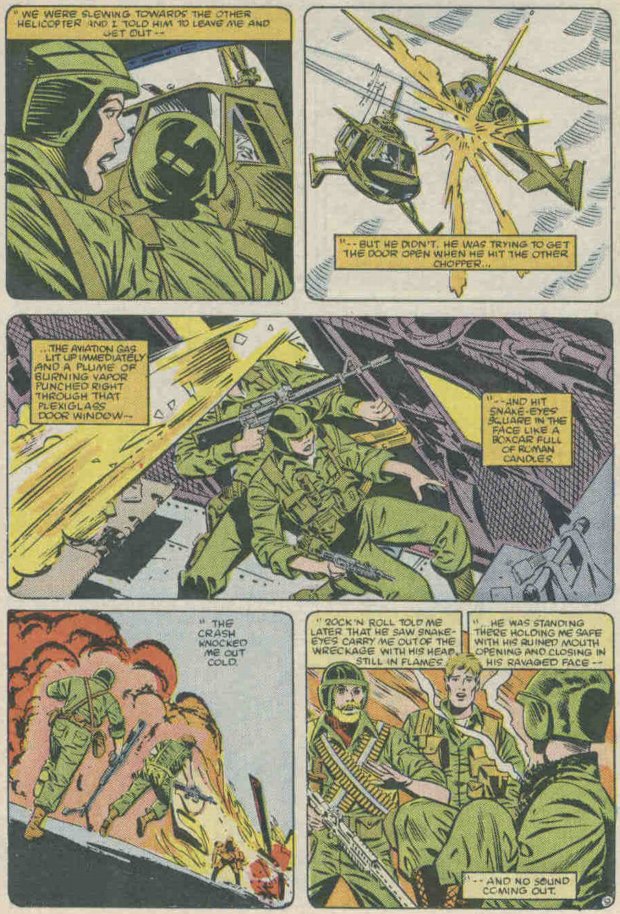
Not that he “says” anything. Hama’s dropped the idea of Snake-Eyes writing notes to express himself by now. He’s defined by his actions, where you see not only loyalty, but also a quiet self-confidence. Snake-Eyes lets sparring partners “beat” him because he knows he’s the best, and doesn’t care to prove himself.
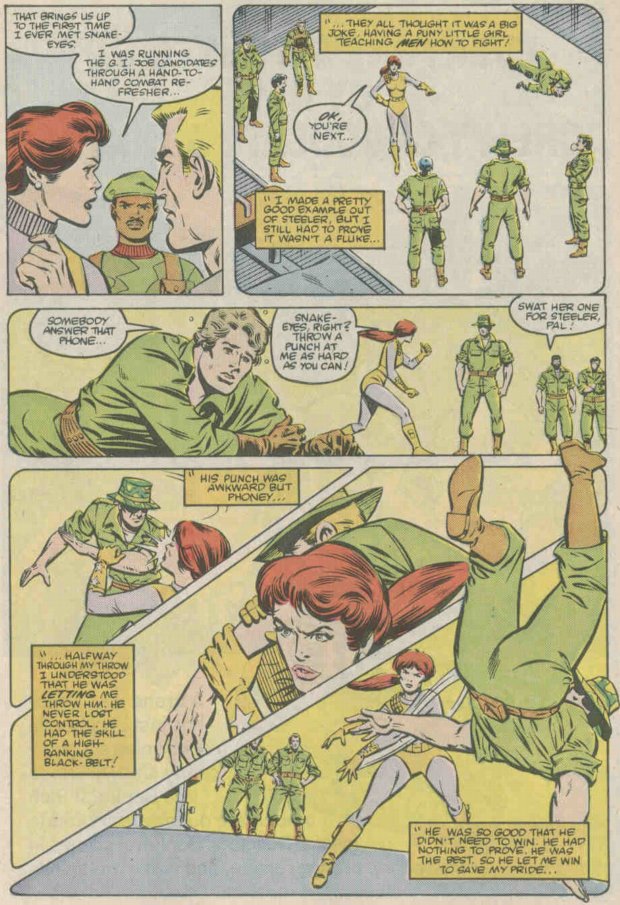
He’s also respectful of others' feelings, so if getting over on Snakes makes you feel good about yourself, he’s fine with that. Knowing now that Hama based Scarlett on his wife, I’m not sure what to say about her hopeless desire for Snake-Eyes to ever open up to her.
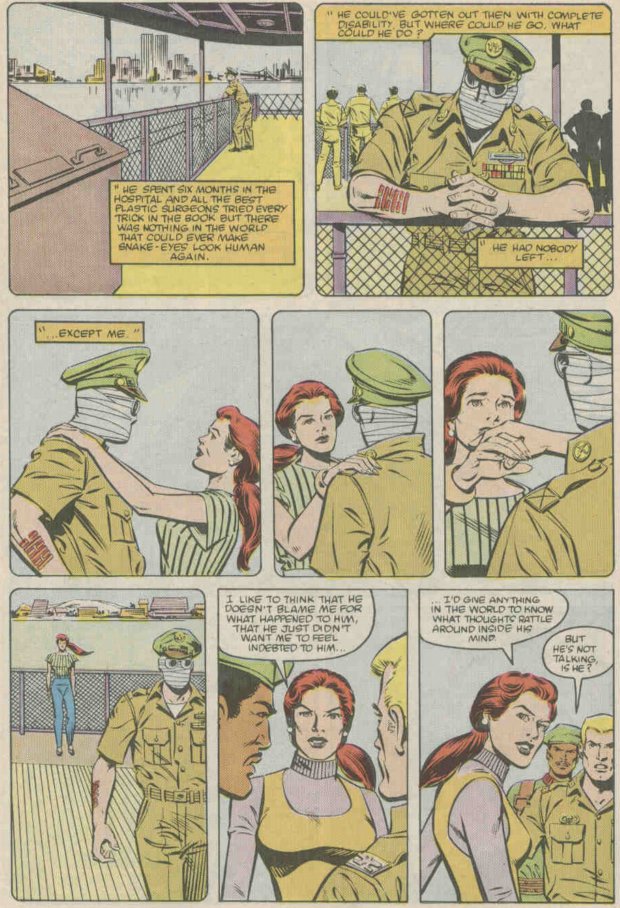
Also not sure of the percentage Hama views Snake-Eyes as a literal character versus representative figure. Clearly, he’s symbolic of noble sacrifice & valuing personal honor over the world’s perception. Logically, Snake-Eyes would be writing out notes to his allies, if not using some hi-tech text reading device. That robs the character of poetry, something Hama had to realize by this point. The idea of ego as a mortal sin has begun to crop up, specifically in Dr. Venom’s stories. Was Snake-Eyes reimagined as a moral response to this aspect of human nature? Finally, Spanish Harlem, circa 1983. Springer’s art has a Jack Davis quality here.
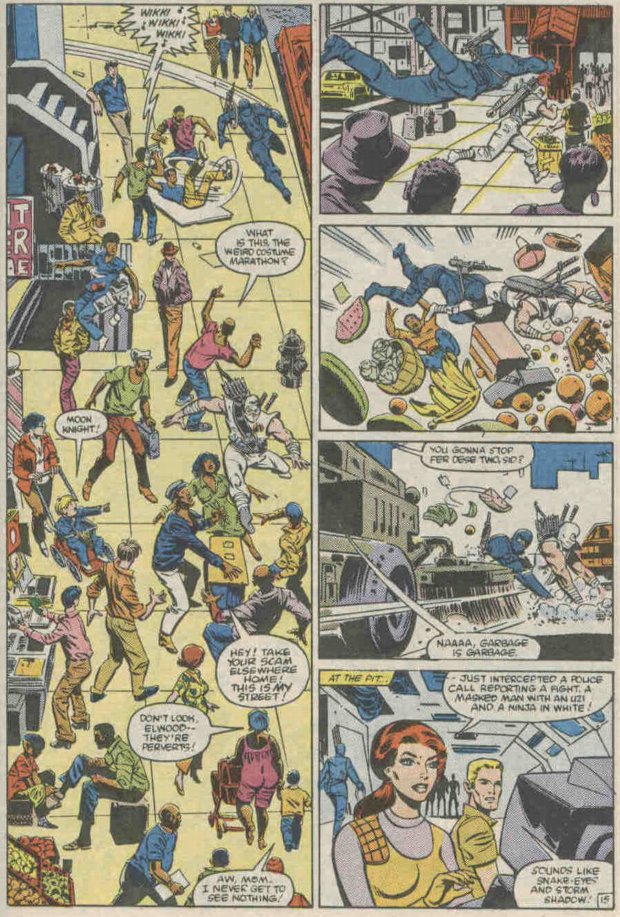
No comments:
Post a Comment